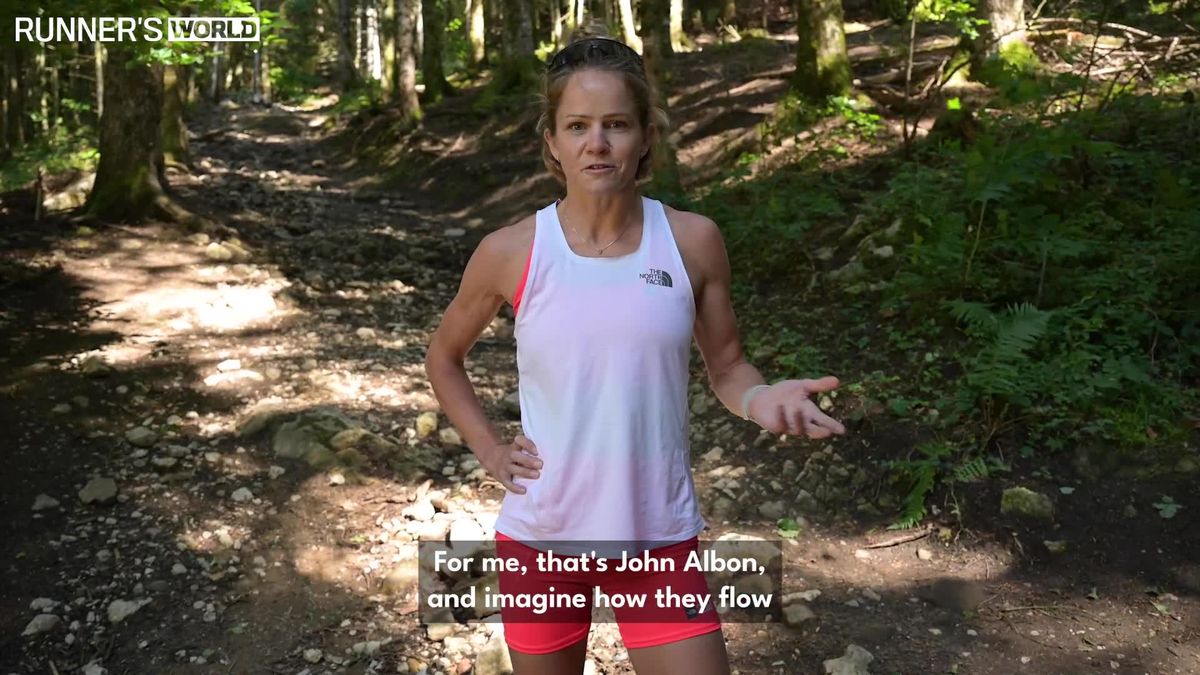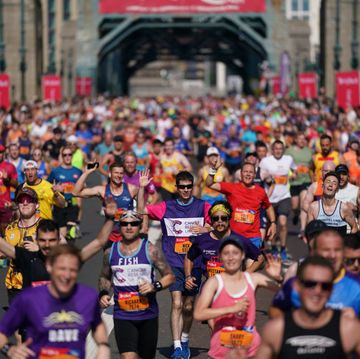You’d think it would be easier to run down a mountain than to run up it. And sure, if you’re talking about gasping for air and feeling your heart pounding, that’s true.
But as far as your legs are concerned, running downhill for a long period of time is one of the cruellest punishments you can inflict. The eccentric muscle contractions (your quadriceps and calf muscles are trying to shorten but are being forced to lengthen each time your foot hits the ground) cause significant microscopic damage to your muscle fibres, resulting in fatigue and eventually pain, and then delayed-onset muscle soreness (DOMS) in the days that follow. In fact, downhill running is commonly used in labs to study DOMS.
It also drains your energy levels. Research has found that you use less energy running downhill when the slope is less than about 20 per cent. But beyond that, each step requires more braking and provides less acceleration, so you start burning more energy again.
The upshot, however, is that downhill running can lead to rapid muscle adaptions and improved running. A recent study, published in the European Journal of Applied Physiology, saw 10 subjects do 10 modest downhill workouts over a four-week period. This resulted in ‘neuromuscular adaptions typically observed after high-intensity resistance training’. There was no change to the subjects’ VO2 max scores, but the results do suggest that short-term, moderate-intensity downhill running can promote rapid gains in knee-extensor muscle strength, size and structure.
But there’s an art to it. If you’re running on trails and the downhill is particularly technical, you need to be able to place your feet carefully to ensure you don’t fall, all while maintaining your balance.
‘Running downhill on trails successfully comes down to two things, correct technique and confidence,’ explains trail running coach Matt Buck, owner of Running Adventures and guide runner for Love Trails Festival. ‘Once you have mastered the technique, practise lots and constantly challenge yourself over different types of terrain and gradient, and the confidence will come.’
How to run downhill
To help your downhill technique, follow these simple tips:
1. Work on your pace
Most runners make one or two obvious mistakes when running downhill. They either sprint, which causes severe muscle soreness later on or they’re so hesitant to surrender to gravity that they’re constantly braking. The optimum pace is somewhere in between.
2. Look where you are going
‘When running on trails, try to avoid looking at your feet,’ says Buck. ‘You need to get used to looking at least three to four metres ahead so that you can see what is happening, this will enable you to plan a safe route down the hill and give you more time to react to the terrain.’
3. Shorten your stride
‘You don’t want to over stride, doing this will increase your risk of injury and mean that you have little control over what you are doing and where you are going,’ says elite trail runner Elsey Davis. ‘Instead, make sure you keep a fast and short cadence – you want to keep your feet moving fast.’
3. Keep your arms out and away from your body
This will help you to stay balanced. ‘It might seem like you’re reverting back to your school days, but there's a reason why we learn to balance with 'aeroplane' arms and that’s because it helps us be more aware of our centre of gravity and helps us stay upright,’ says Buck.
‘Just keep your arms out and reacting to the ground,’ adds Davis. ‘Try to coordinate your arms and legs together.’
4. Vary your foot strike
‘There’s a bit of evidence that landing on your toes on a downhill puts extra strain on muscles compared to landing on your heels, resulting in greater muscle damage,’ says Buck. ‘That said, a more useful strategy to keep in mind is to mix things up to vary the load on different muscle groups, by switching between different foot-strike patterns. That happens naturally on uneven trails but might involve a deliberate decision on smoother downhills.’
5. Emulate the pros
‘If you can, go out for a run with someone you know runs really well downhill,’ suggests Davis. ‘If you don’t have anyone to run with, just think of someone you know or admire who runs really fast downhill – for me, that’s skyrunner Jon Albon – imagine how they flow and move down the hill and try to emulate that.’
6. Train for it
This is the big one. ‘If you’re planning a race that includes substantial downhill, make sure you do some significant downhill running in training – significant enough that it makes you sore,’ says Buck. ‘If there are no hills where you live, find a treadmill and set it to run downhill.’
7. Work on your core strength
‘Make sure you have a strong core,’ adds Davis. ‘Inevitably, you are going to trip on some of the rockier terrain, and having a strong core will help to correct yourself when that happens.’
8. Relax
It might seem counterintuitive, but try to relax as much as possible when running downhill, says Davis. ‘The more you tense up, the worse it gets, and the more you’ll put the brakes on. But if you’re relaxed and calm, you are more likely to flow easily through the trail.’
9. Strengthen your shins
Try not to let your feet slap on the ground when you are running downhill. Step lightly and don’t reach out with your feet. Slapping can be a sign of weak muscles in the shin area, in which case you need to strengthen them.













